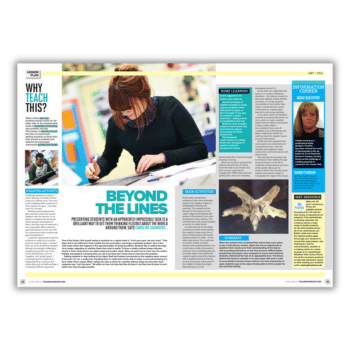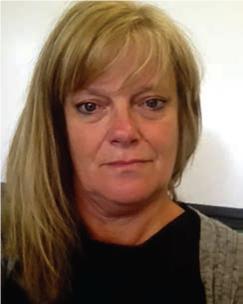This negative space art lesson plan presents students with an apparently impossible task. It’s a brilliant way to get them thinking flexibly about the world around them…
One of the things I find myself saying to students on a regular basis is, “trust your eyes, not your brain”. They often find it very difficult to think outside the box and tackle a seemingly unsolvable problem.
One of the chief areas where this happens is the age-old problem of drawing outlines. Students like to outline the edge of an image, regardless of whether these lines exist in reality.
To draw a solidly outlined shape indicates clearly in their minds where one object stops and another starts.
When we point out to them how the outline flattens and deadens a drawing they can see it. However, they don’t know how to overcome the problem.
Negative space art lesson
Getting students to stop looking at the object itself and instead concentrate on the negative space around it has been, for me, a useful way of getting them to really look and be able to make a successful drawing of a form rather than a shape.
When I asked my class to draw me a starfish without using any lines their stock response was, “can’t be done.”
Yet within an hour not only had they all done it, but they had all done it much better than they thought possible.
Transferable skills and problem-solving are key components of studying art. In this lesson students must change their way of thinking in order to get round a problem put before them.
Initially working as a professional textile designer, Caroline Saunders entered the world of teaching late in life. She is now leader for art at Hazelwick School in Crawley. Get advice for helping students with their GCSE art final piece.














